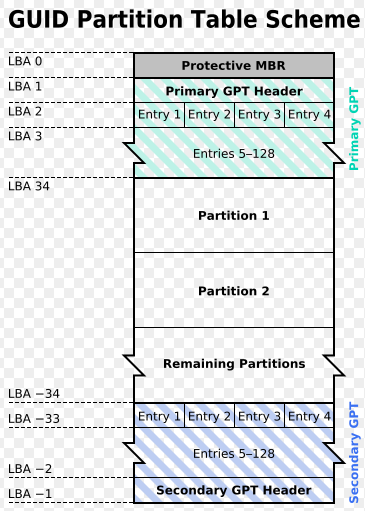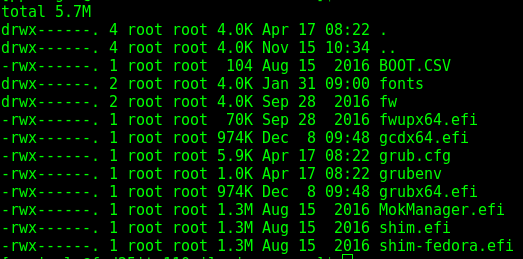i'm trying to figure out how to do this thing and i still lack basic knowledge, could you really quickly explain to me how efi works?
i was under the inpression that mbr has one boot record and it boots it and then stops, and efi checks if each partition is bootable, and tries to boot from each of them in order specified in bios or boot menu. I don't understand how one bootloader can replace another in efi mode on a gpt drive in that situation, shouldnt it just create it's own file on it's own partition to be found by efi when it looks for bootable files on boot?
If you don't want to read all my stuff, you can read this:
https://wiki.manjaro.org/index.php?title=Some_basics_of_MBR_v/s_GPT_and_BIOS_v/s_UEFI
So firstly, MBR and GPT are mutually exclusive in most cases (except when considering backwards compatibility). Master Boot Record and GUID Partitioning Table are two ways to handle the first section of a drive for the partition table and booting.
GPT is the newer "more functional" way, while MBR is the legacy "supported by more things" way. MBR is more "all-in-one" though. It's essentially a bootloader on it's own, just very simple and lacking features, so most things use it to launch something newer like GRUB, but it also contains the partition table.
MBR, being old, has limitations. Like only allowing four "primary" partitions. After that, only Extended partitions can be created which are extensions to the four primary partitions. GPT's limit on partitions is like 256, so you'd never realistically reach it's limit on partitions.
MBR also can only address up to 2TB of space on a drive. GPT is 9.4 Zetabytes (muy muy grande). Both GPT and MBR are installed to the first sectors on a Drive for booting purposes.
The MBR consists of 512 or more bytes located in the first sector of the drive. From the Wiki:
It may contain one or more of:
A partition table describing the partitions of a storage device. In this context the boot sector may also be called a partition sector.
Bootstrap code: Instructions to identify the configured bootable partition, then load and execute its volume boot record (VBR) as a chain loader.
Optional 32-bit disk timestamp.
Optional 32-bit disk signature.
A chain loader meaning going from one boot loader into another (i.e. MBR into whatever the VBR specifies, such as GRUB).
While MBR is the first 512 bytes of a drive, GPT is more complex because it attempts to be redundant. Here's an image of how it's laid out:

As you can see, the MBR still exists in GPT, but it's used for backwards compatibility reasons only (so that you can still boot from older computers that don't support GPT or UEFI).
UEFI is Unified Extensible Firmware Interface. GPT is a part of its specifications. It's an enhancement on the Firmware that runs on a Motherboard as it interacts with an Operating System. Mixed with GPT (which just handles Partition tables and redundancy for them), it's essentially the replacement to MBR's boot loader functionality, and it serves the purpose in launching the EFI boot loader, whatever that is.
UEFI will have a bunch of entries in it's memory directing to wherever the .efi bootable files are. Here is a listing of my /boot/efi/EFI/fedora directory on my Fedora 25 workstation:

The Motherboard EFI will have an entry pointing to hd0,gpt1/EFI/fedora/grubx64.efi as an example. It will have something similar for Windows as well. I'm not sure how VeraCrypt handles that, but it probably has an EFI entry. I don't know what all those .efi files are for as I don't have EFI entries for all of them, but I just assume it's a Fedora thing.
You usually either go BIOS/MBR or UEFI/GPT.
BIOS stands for Basic Input Output System and it's for getting the computer up and running. It's the thing that initiates the boot process. UEFI replaces it just as GPT replaces MBR. You can do BIOS/GPT as GPT has backwards compatibility, but I don't believe UEFI/MBR is possible as UEFI requires GPT.
i should note that i was using windows 7, and wasn't bothering with the whole encryption thing. i'd suggest that too, but you obviously want to so i'm not sure "don't do this thing you want" is all that constructive.